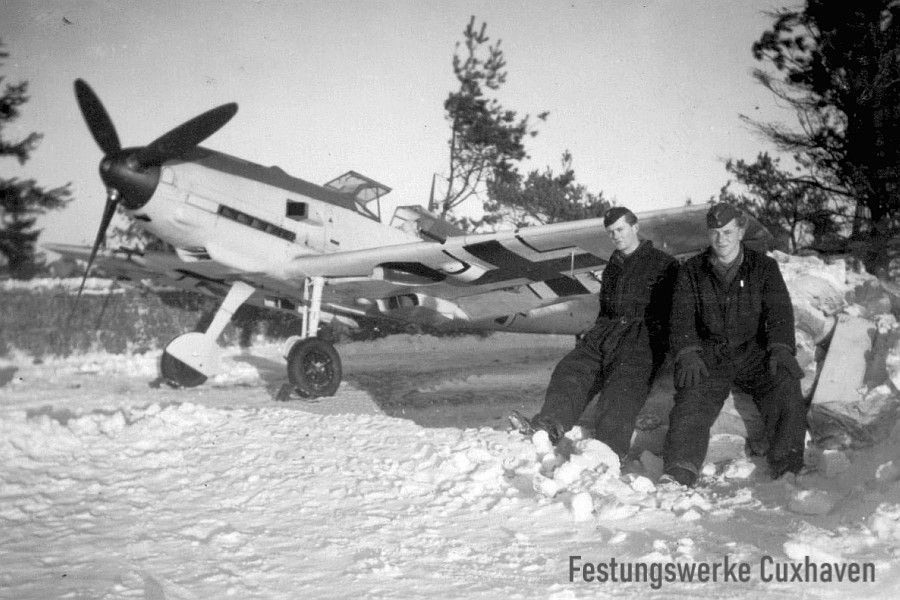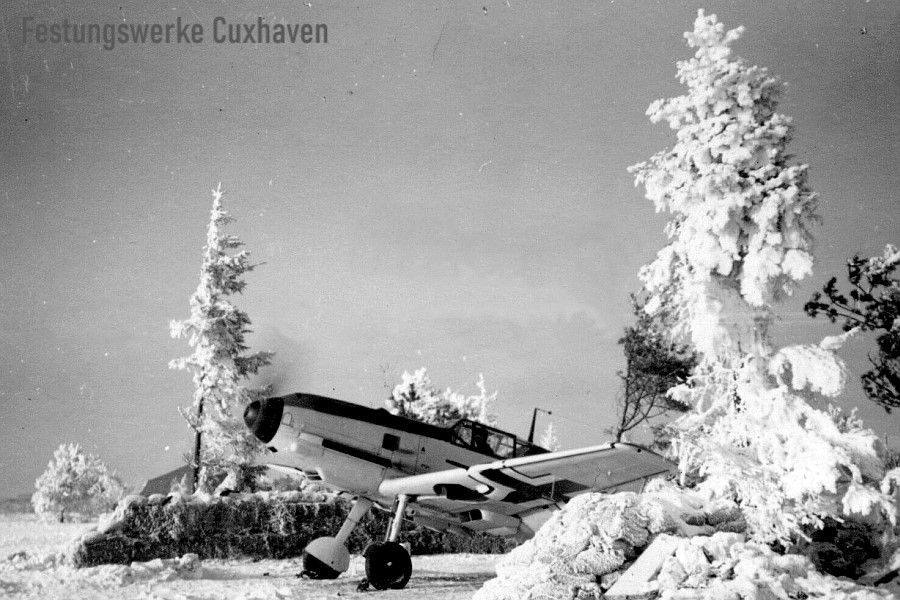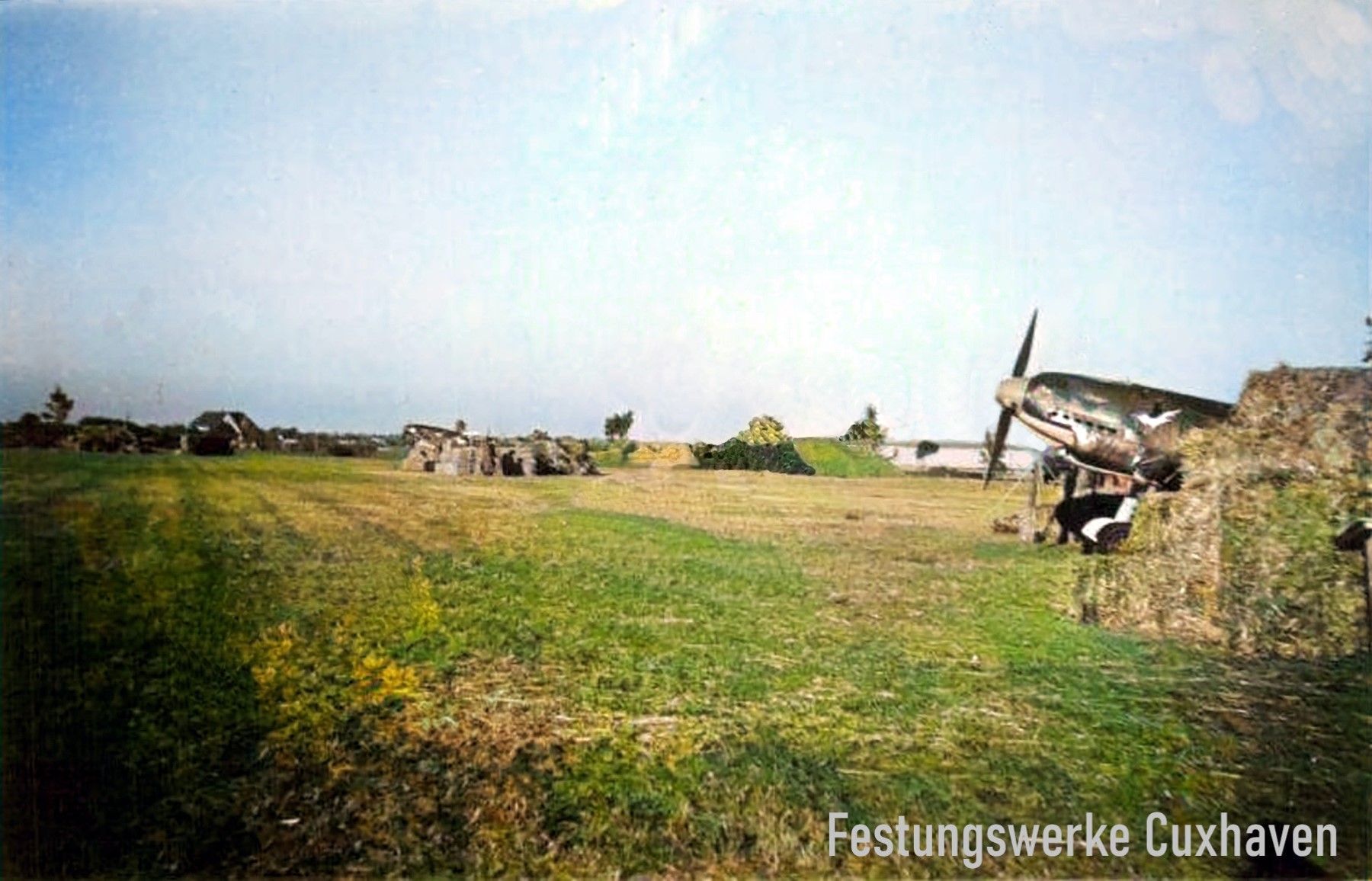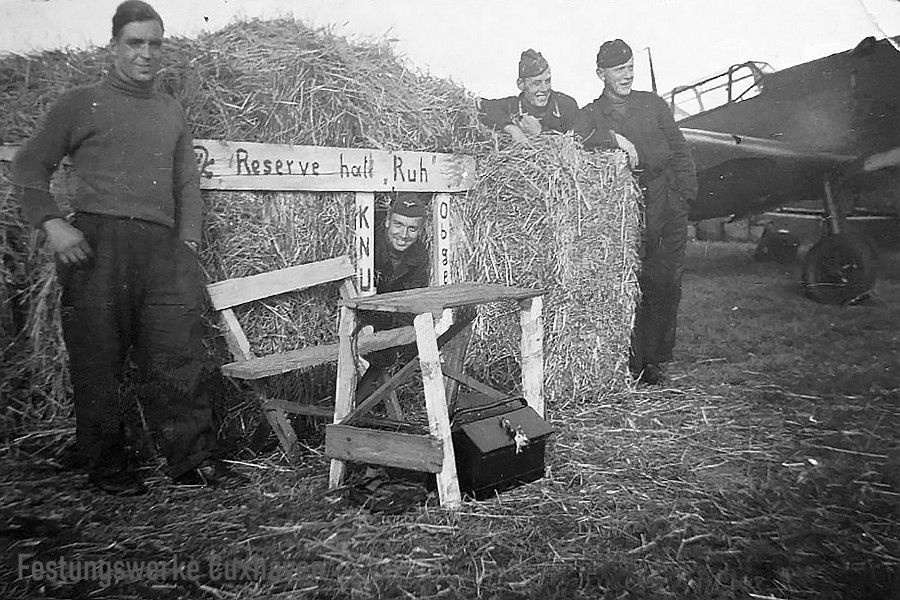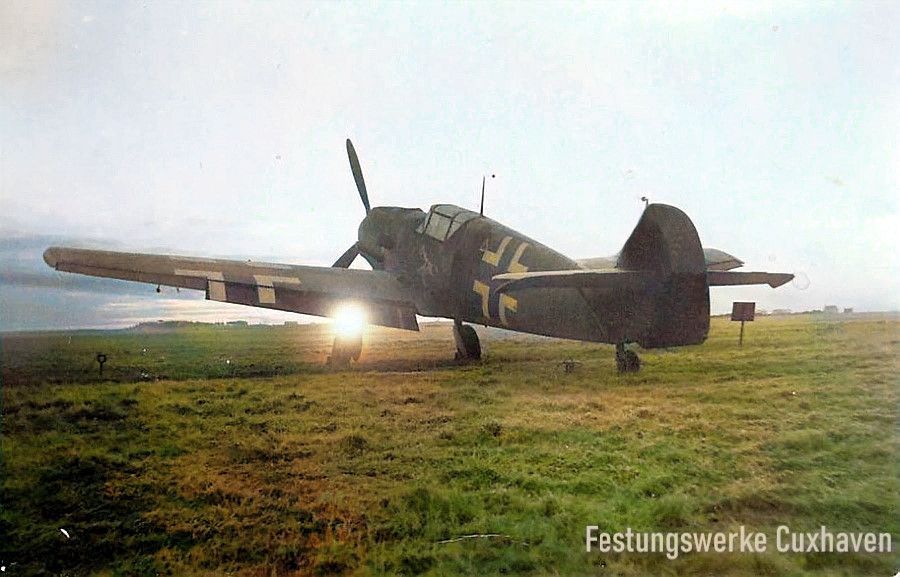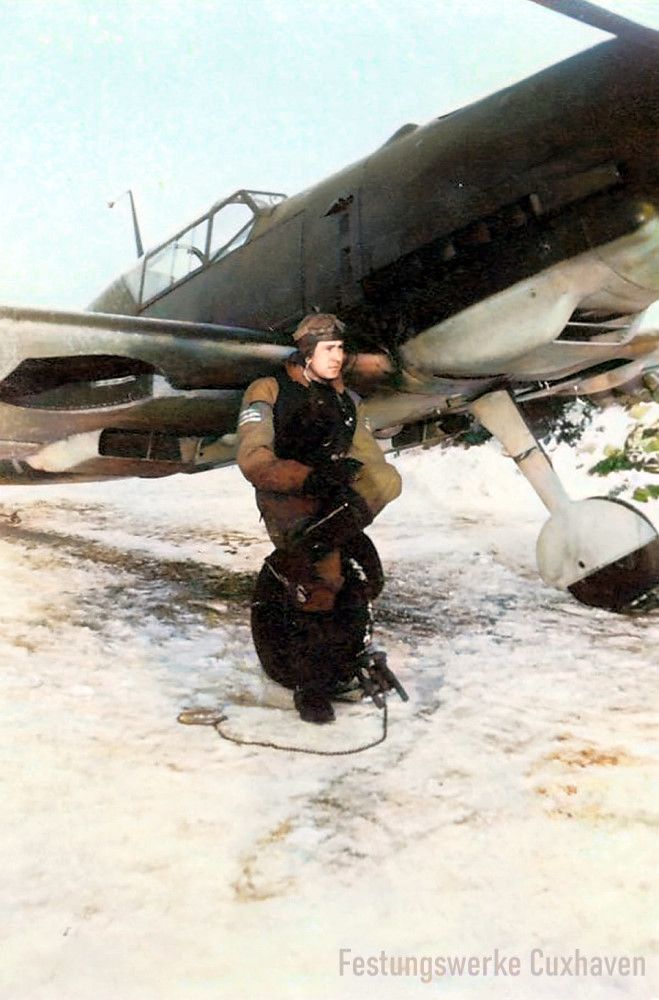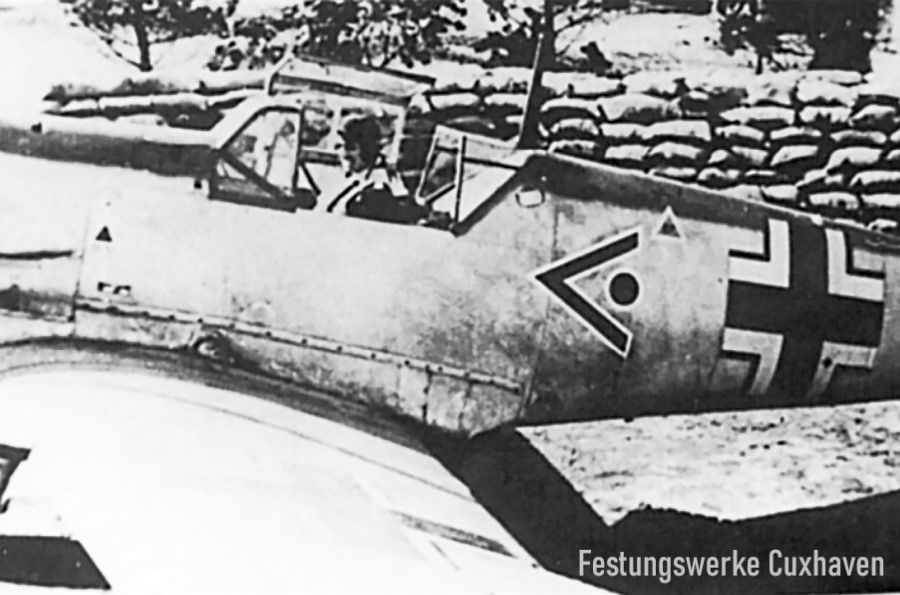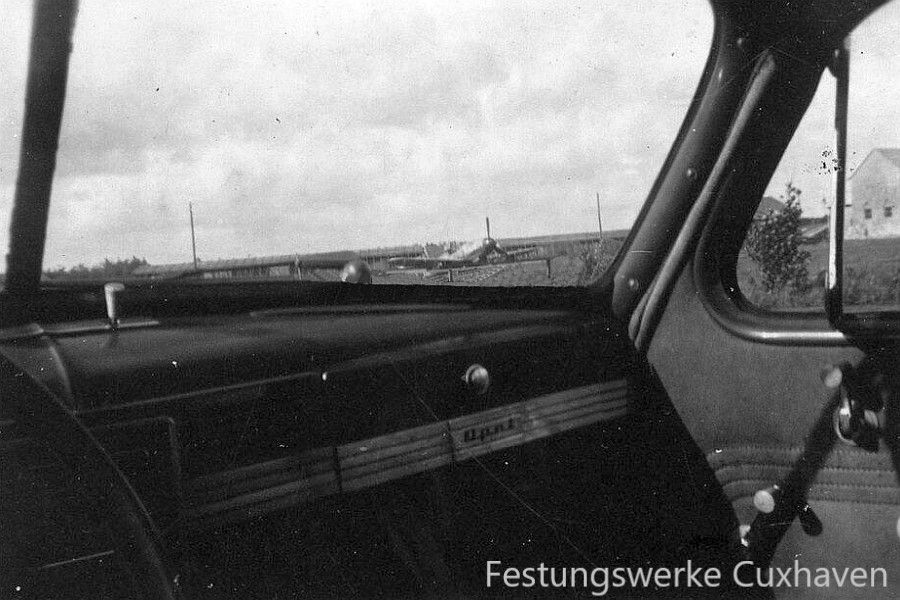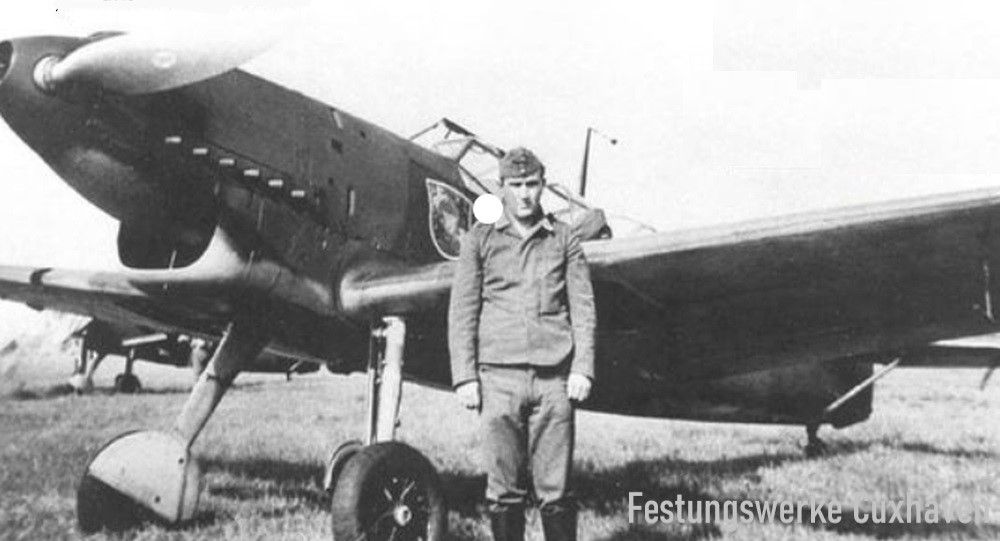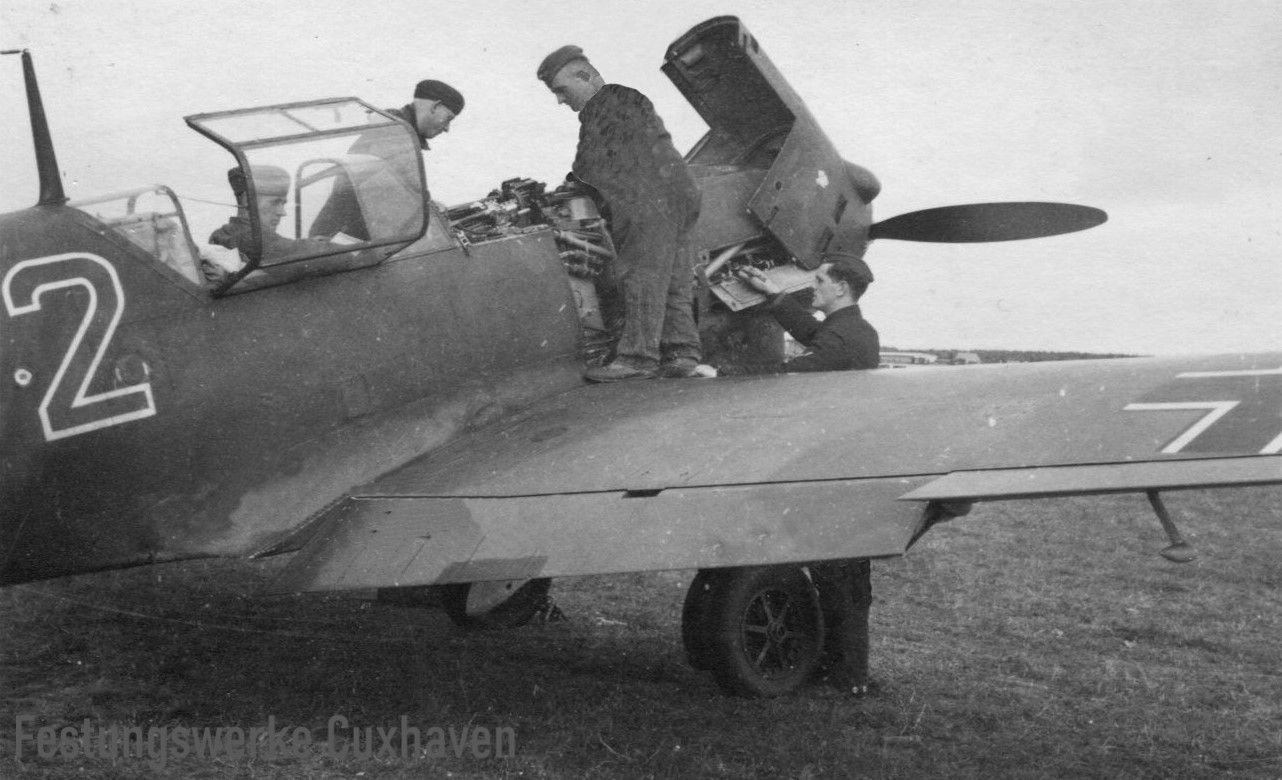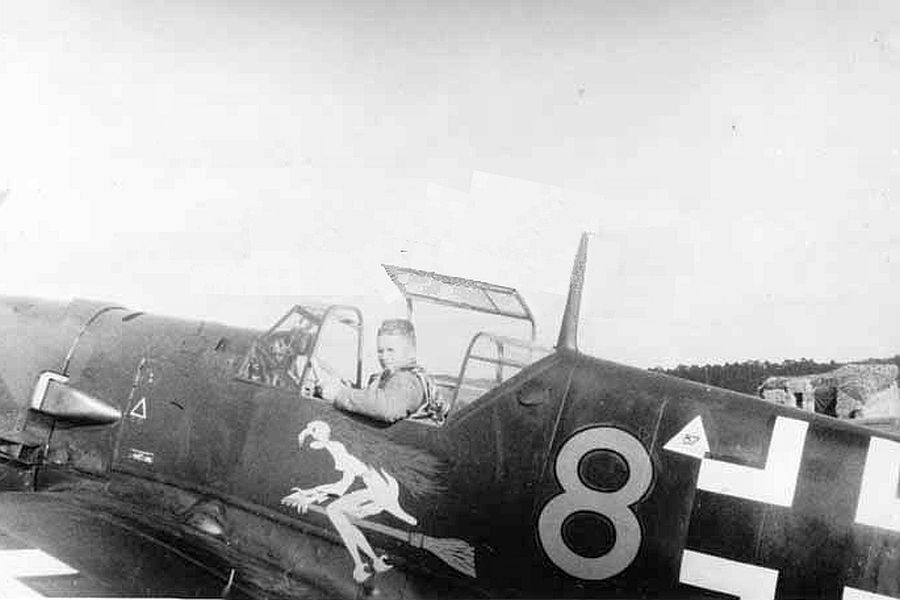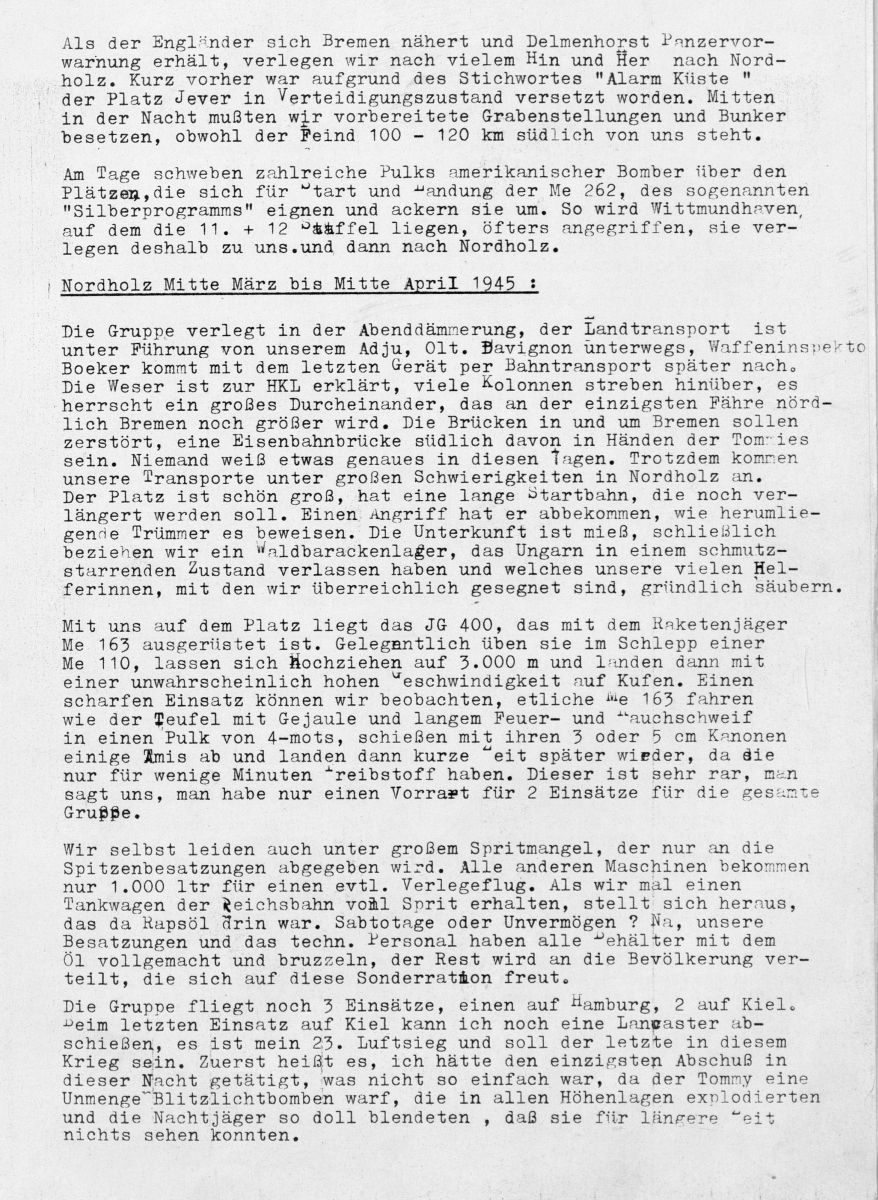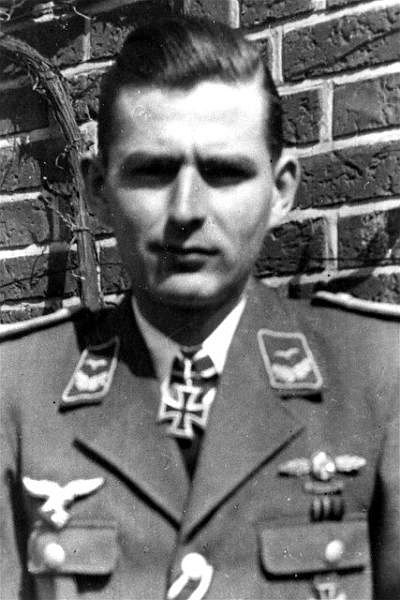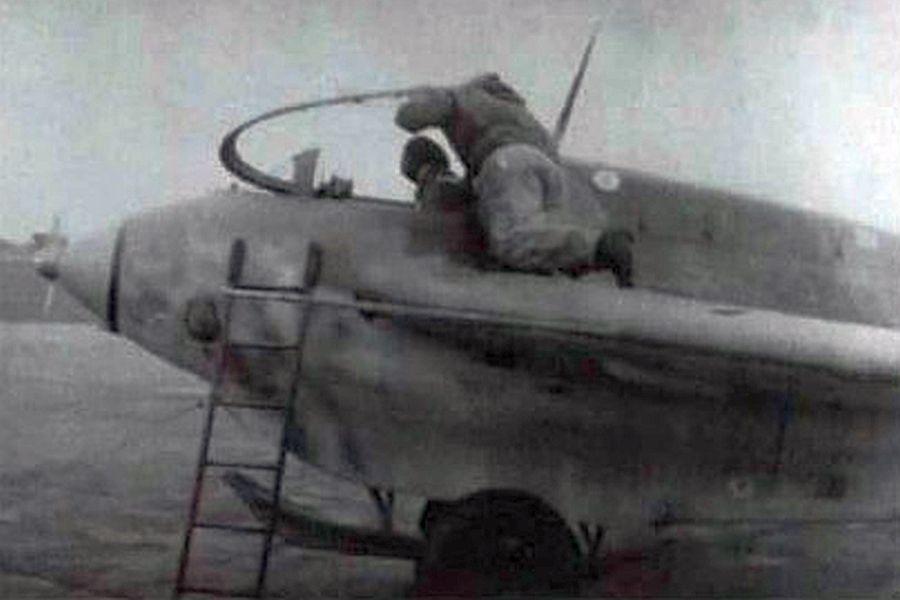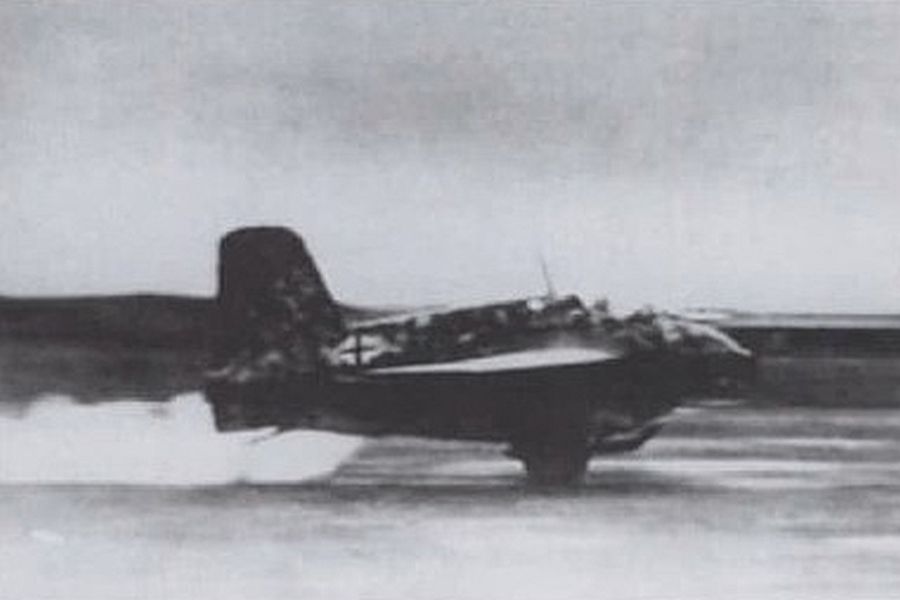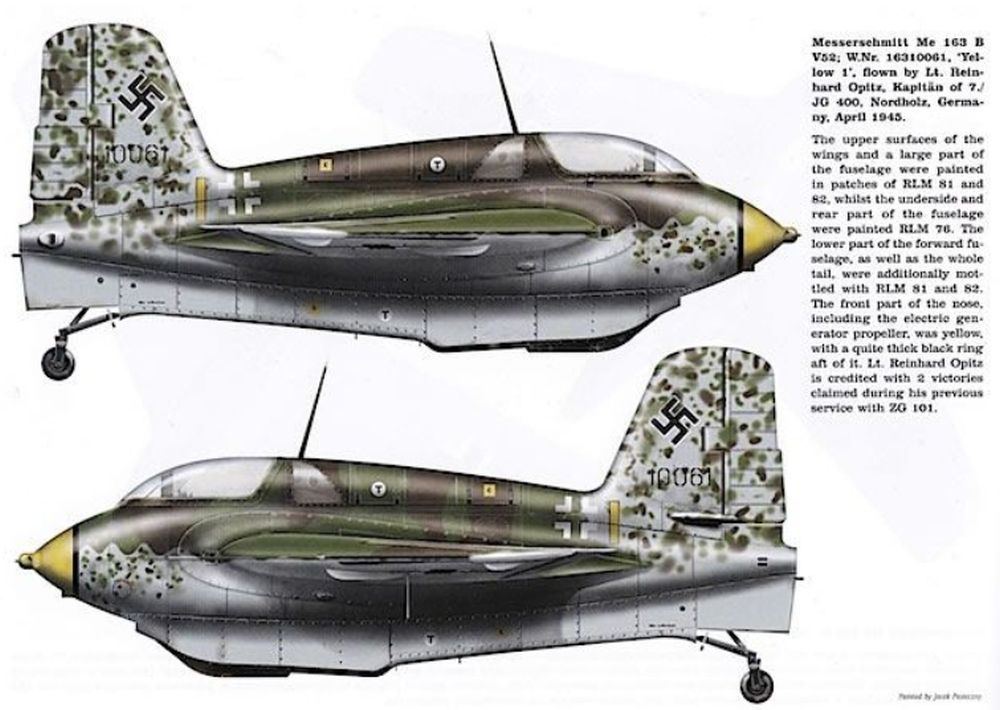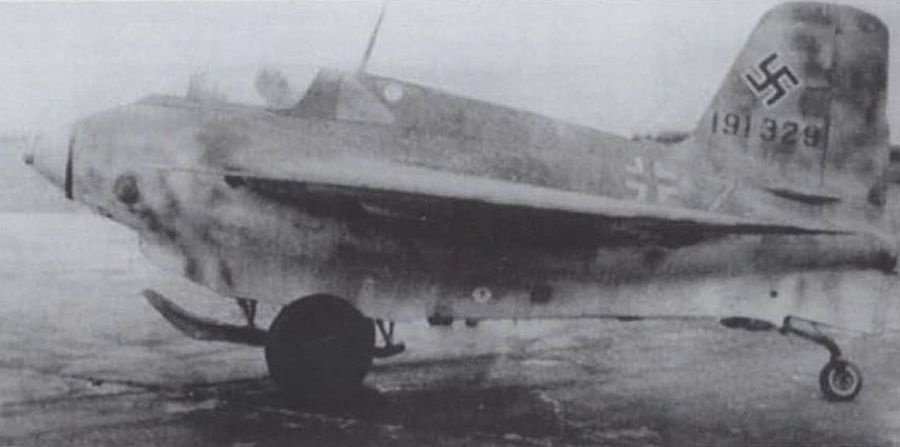
Nordholz initially played no role in the plans of Air District VI, which was responsible for the coastal area. Only after the change in responsibilities through the division into air districts did work begin in 1938 to build an air base on the site of the former airship port. This new operational base was equipped with three paved runways right from the start because of the sandy soil. As part of the general mobilization for "Fall Weiss" [invasion of Poland in 1939], the first flying unit to move from Pilsen Air Base, which had been occupied since March 1939, to Nordholz was II./Jagdgeschwader 77 "Herz ASS" with its 40 Messerschmitt BF 109 E aircraft on August 25, 1939. Right from the start of the war on September 1, 1939, British fighter planes and their allies were active in the Elbe-Weser area, especially at night. While they were defending themselves, the active squadron was already involved in combat missions in the entire coastal area. But just four weeks later, on September 21st, the group moved on to Neumünster. They were followed from Jever by the II./186 carrier group on November 8th, 1939. The crews of this exotic unit were to gain training and operational experience in Nordholz so that they could later be deployed as a fighter group on the future aircraft carrier "Graf Zeppelin". As is well known, the ship was never completed and the squadrons were later distributed to other units. On February 27th, 1940, the 4./Group 186 was stationed in Nordholz as a relief base, from where blockade and training flights as well as missions were flown. The training and operational flights were carried out with Messerschmitt BF 109 E and Messerschmitt BF 109 B1 aircraft.
During an air battle off Terschelling, a squadron of the 2./Tr.Gr. 186 from Nordholz shot down two Bistrol Blenheim bombers on May 5, 1940. The same happened on May 6, 1940 off the East Frisian coast, one Blenheim and one Vickers Wellington. The carrier groups spent the entire harsh winter of 1939/40 in Nordholz. The 4./186 Tr.Gr. left the base on March 9, 1940, heading for Westerland on Sylt. In June 1940, the 2./186 Tr.Gr. followed on to Norway and was renamed 3./JG77 on site.
As early as March 11, 1940, II./Jagdgeschwader 2 "Richthofen" [Me 109 E], which had been stationed at Zerbst Air Base since December 1939, arrived at the airfield. From April 7 to 12, the group spent a short stay in Neumünster and on May 11, 1940, it moved on to Hamminkeln Airfield. To take part in "Operation Weserübung" [Invasion of Norway in 1940], Kampfgruppe 100 was based in Nordholz from April 8 to 12, 1940. This unit came from Lüneburg and flew 15 combat missions to Scandinavia and the North Sea with its Heinkel He 111H bombers. In addition to regular bombing missions, it was also specially trained and equipped for torpedo attacks on shipping targets. After the end of the operation, it then moved on to Schleswig. After the end of the French campaign, II./Jagdgeschwader 52 was withdrawn to Nordholz and placed under the command of Stab/Jagdgeschwader 1. It was supposed to help ensure the protection of the German Bight. But on August 6th, the group was moved to Peuplingues, southwest of Calais, to take part in the "Eagle Day" [Battle of Britain 1940]. After that, things were very quiet at the operational base for almost two years. There is no record of the base being used until the end of May 1943. Only occasional landings by a few aircraft, such as the minesweepers of the 'Mausi' group from Weddewarden, were guests at the airfield in the meantime.
Source: Gerd Wildfang / MB
Squadrons and aircraft stationed at Nordholz Air Base (found so far)
squadron
Aircraft type
Zeitraum
2./JG 77 - ' Herz Ass'
Messerschmitt BF 109 E
Aug.-Sep. 1939
6./ Carrier group 186
Messerschmitt BF 109 E BF 109 B 1
39. November – 04. March
2./ Trägergruppe 186
Messerschmitt BF 109 E BF 109 B 1
??? - Juni1940
2. Group JG 2 - 'Richthofen'
Messerschmitt BF 109 E
11.03 - 07.04.40 and 12.04 - 14.05.40
Teile von KG. 100 'Löwengeschwader'
Heinkel He 111 (Invasion of Norway)
April 1940
2./JG 52
Messerschmitt BF 109 E / to refresh from the English Channel /Fra.
Jul.-Aug. 40
4./ JG 54 'Grünherz Geschwader'
Messerschmitt BF 109 G6
May 1943
Staff /JG 26 'Schlageter'
Messerschmitt BF 109 G6
23 Mai - 12 August 1943
9./ and 12./JG 26 'Schlageter'
Messerschmitt BF 109 G6
01 July - 12 August 1943
4./ 11./ JG 54 'Greenheart Squadron'
Messerschmitt BF 109 G6 / Both groups were subordinate to the JG 26 staff.
May 1944
1./NJG 3 - 7./ Squadron
Messerschmitt BF 110 G
May 1943-April 44
3./NJG 3 - 10./, 11./ and. 12./ Staffel
Junkers Ju 88 G
März-April 1945
???
Messerschmitt Me 262 'Schwalbe' (Strahltriebwerkjäger)
1944 -1945 ?
2./ JG 400
Messerschmitt Me 163 'Komet' (rocket fighter)
April 1945
Sources: AFHRA A5257A p.619 (1944/45)
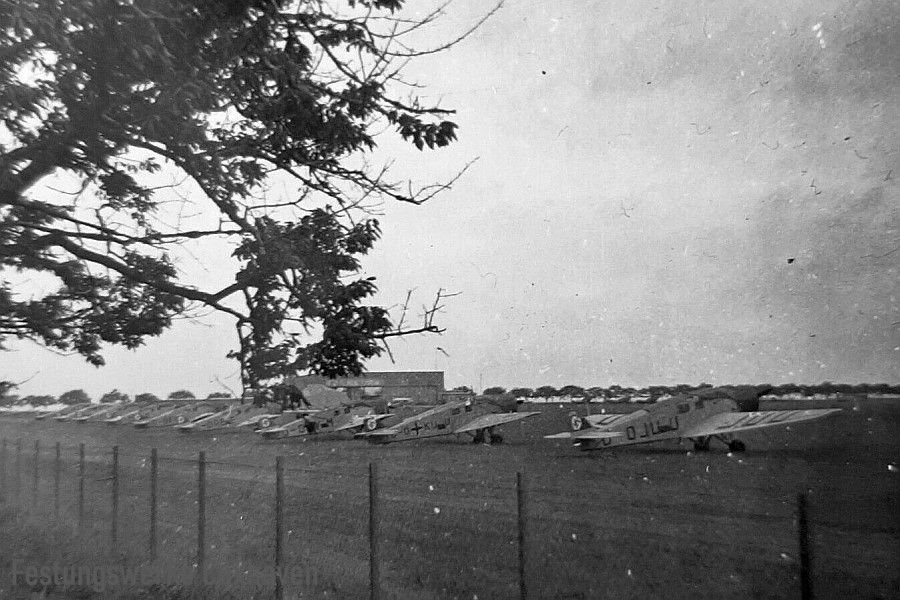
A squadron of Junkes JU - W 34 May 1939 at the Nordholz air base. Source: Private

Messerschmitt Bf 109 Emil of the carrier group -Jasta 186 & JG77 on 01.04.1939.

Messerschmitt Bf 109 Emil of the carrier group - Jasta 186 & JG77 on 02.04.1939.Source: Private

Messerschmitt Bf 109 Emil of the carrier group -Jasta 186 & JG77 on 01.04.1939.Source: Private

Technical maintenance on the machine (ME 109 E) using all muscle power. A machine of II/JG 2 - 'Richthofen' in Nordholz on 11.04.1940.Source: Günther Domschk/Stab JG2

Zwei Maschinen des 5./JG 52 auf dem Flugplatz Nordholz in Bereitschaft . Aufnahme zwischen Juli und August 1943.
Quelle: Privat
It was not until May 27th that the staff of III./Jagdgeschwader 26 "Schlageter" and the subordinate squadrons 9./Jagdgeschwader 26 "Schlageter", 4./Jagdgeschwader 54 "Grünherz" under Oblt. Graf von Matuschka and the 11./Jagdgeschwader 54 "Grünherz" were relocated from Vendeville to Nordholz. Here the group staff and the 9th squadron were equipped with the Messerschmitt Bf 109 G-6. From the beginning of June the entire group was then deployed in the Reich's air defense. On June 12th the 12./Jagdgeschwader 54 "Grünherz", which had remained in Vendeville, followed. However, the following day the 11./JG 54 went back to Vendeville. On July 1st, a series of renamings took place: 4./JG 54 became 7./Jagdgeschwader 26 "Schlageter", and 12./JG 54 became 12./Jagdgeschwader 26 "Schlageter". In the two and a half months of its stationing, the group and its subordinate squadrons took part in a total of 9 defensive missions against American four-engine units before moving to Amsterdam-Schiphol on August 13th. In November 1943, the operational base, which had been upgraded to allow night landings, became the site of the night fighter: until April 1945, squadrons or commandos of the Night Fighter Wing 3 were stationed there in rotation. First it was the 7th/Night Fighter Squadron 3 from November 1943 to March 1944, then the 8th/Night Fighter Squadron 3 from April to June 1944, then parts of the IIIrd/Night Fighter Squadron 3 until around July 24th. This was followed by the I. Group of the NJG 3: from the end of July to August, initially the 1st/Night Fighter Squadron 3, then from mid-August to early October 1944 the 2nd/Night Fighter Squadron 3. The squadron was followed by a command of the I./Night Fighter Squadron 3 from mid-October to early November. In mid-November 1944 the 8th/Night Fighter Squadron 3 came to Nordholz, and probably stayed there until the end of February 1945. It remained there as part of the reduction in night fighter units until they were disbanded to one squadron per group. The last night fighter unit in Nordholz was the reduced IV./Night Fighter Squadron 3, which was stationed there from April 5th to 19th, 1945. The stationing of the II./Jagdgeschwader 400 also took place at this time, with at least parts of it moving from Salzwedel to Nordholz and carrying out unpowered training flights with the Me 163 there. For these training flights, the "power eggs" were towed into the air by Messerschmitt Bf 110s. According to the report in the "Jägerblatt", at least one of the towed aircraft was shot down by a British Spitfire during this time [north of the direction-finding point]. The airfield was significantly expanded in the second half of 1944. Aerial photographs by the Western Allies show large fuel tanks that were installed during this time [Order "Silver Program", Appendix 1 to OKL-Gen.Qu. No. 881/44 g.Kdos (Dept. Air Force Bod. Org. II) dated 20.12.44], one of the three existing runways was to be extended to a length of 1,700 m. This was to make it easier for the Messerschmitt 262 "Schwalbe" jet fighter to take off and land, which was said to have been active at the Nordholz air base towards the end of the war. The V1 training and test command (Reichenberg device) was also mentioned here. Unfortunately, it is no longer possible to determine to what extent theoretical and practical training for this insane project was still carried out here at the airfield. Source: Gerd Wildfang / MB

Eine Junkers Ju 52-MS (Magnetspule) der Minensuchgruppe 'Mausi' aus Weddewarden auf Zwischenstop in Nordholz 1942.
Quelle: Privat
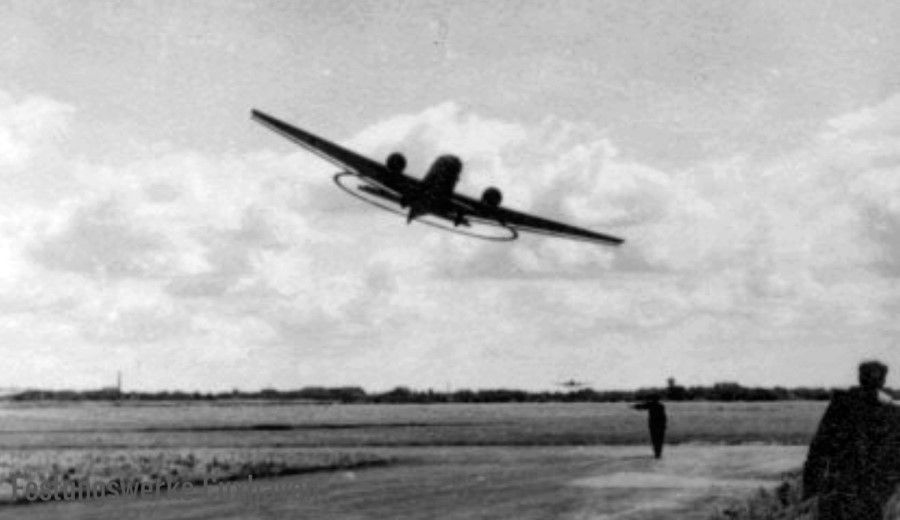
Abflug von Nordholz. Die Maschinen waren während der Minensuchoperationen über den deutschen Küstengewässern zur Nachschubversorgung, regelmäßiger Gast auf dem Flugplatz.
Quelle: Privat
Nachtjagdgeschwader 3 in Nordholz
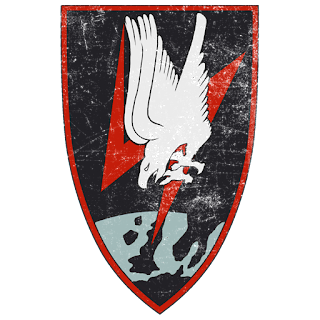
The Night Fighter Squadron 3 was one of the first Luftwaffe squadrons in World War II to be created and used primarily for night fighting. After its formation in October 1940, the squadron initially flew in the Mediterranean. Its four groups were then deployed primarily in the Reich's air defense. There, the squadron was responsible for protecting the northern German coastal area. The NJG remained in action with all four groups until the end of the war. In November 1943, the 7th Squadron of the 3rd Group of the NJG 3 moved to Nordholz with its heavy Messerschmitt BF 110 G-4 fighters to protect the coastal areas. In April 1944, the unit then moved on to Stade. There it began converting to the Ju 88 night fighter variant. The IV. Group of the Night Fighter Squadron 3 was based in Jever at the beginning of 1945. It was subordinate to the 2nd Fighter Division and was equipped with the Junkers Ju 88 G 6. In March, the IV./ Group moved to Nordholz. Here, on March 30, the staff and the 11./ and 12./ Squadrons were disbanded and the remnants of the group were combined in the 10./ Squadron.
Because the Allied combat units were advancing ever further north at the time, the group then moved on to Skrydstrup Air Base in the municipality of Hardersleben/Denmark in April, where it remained until the end of the war. The aircraft of the night fighter squadron operated in the dark in the designated night fighter zones of the Kammhuber Line. They were then guided to the approaching bomber swarms by ground radio location through the Himmebett positions (see Kuckuck-Berensch). During the final approach, the on-board Lichtenstein radar device took over target location. Source: Nachtjagdgeschwader 3 - Wikipedia, Nachtjagdgeschwader 3 (lexikon-der-wehrmacht.de).
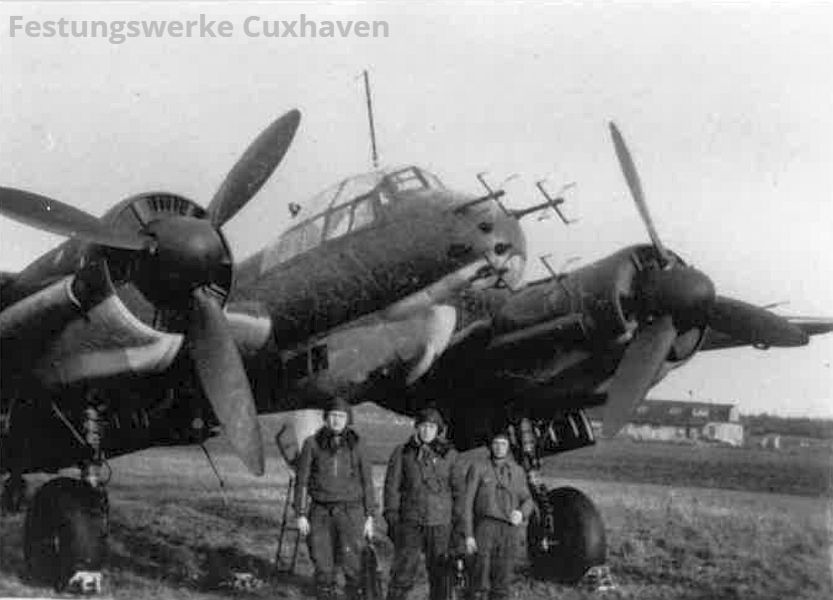
A night fighter Junkers Ju 88 R1 with a FUG 202 'Lichtenstein radar device' and its crew on the airfield. Source: Thorsten Perl

Junkers Ju 88 G6 of the NJG 3. Source: Private

A night fighter crew, it consisted of the pilot, the radio operator and the machine gunner.Source: Thorsten Perl
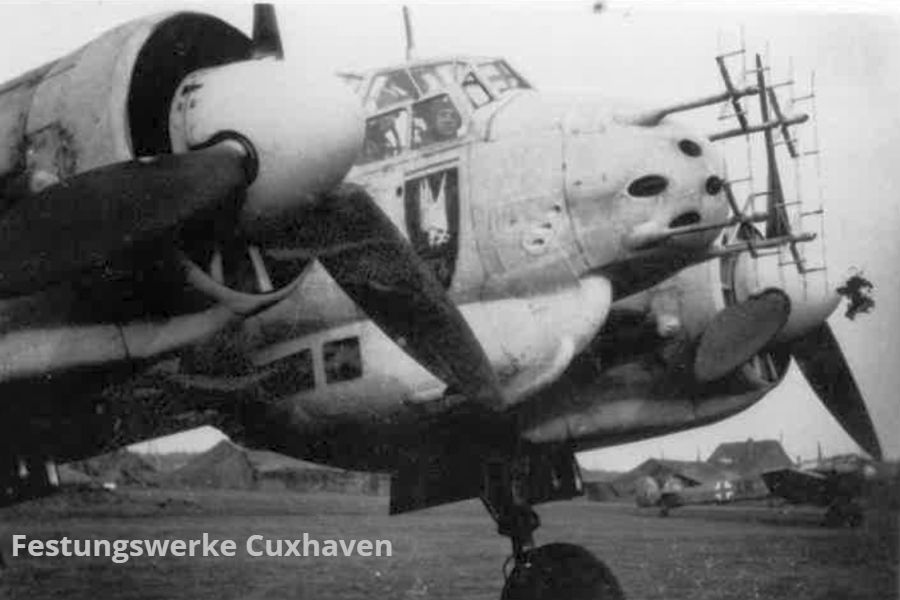
Ju 88 R1 shortly before take-off in Nordholz.Source: Thorsten Perl
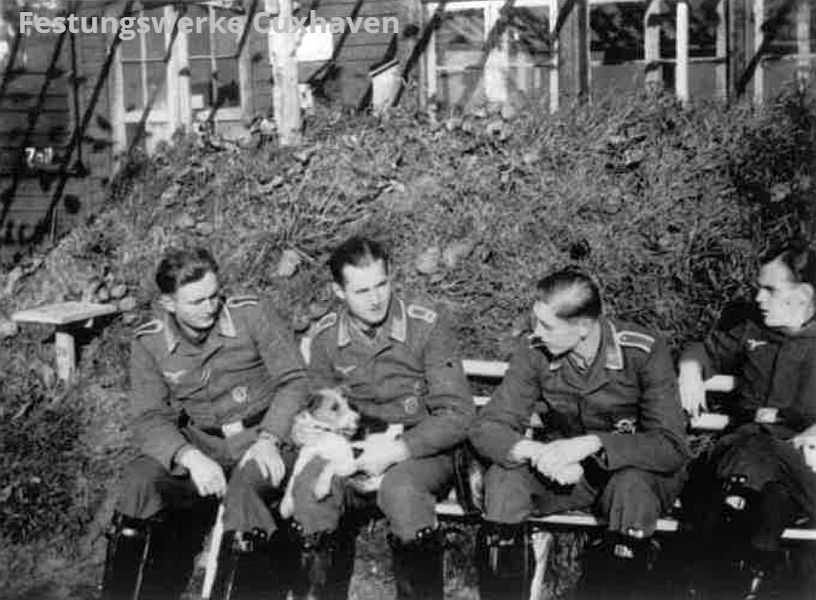
Crews with the squadron dog during a break.Source: Private

Emergency landing of a Ju 88 R1 in the vicinity of the air base.Source: Private
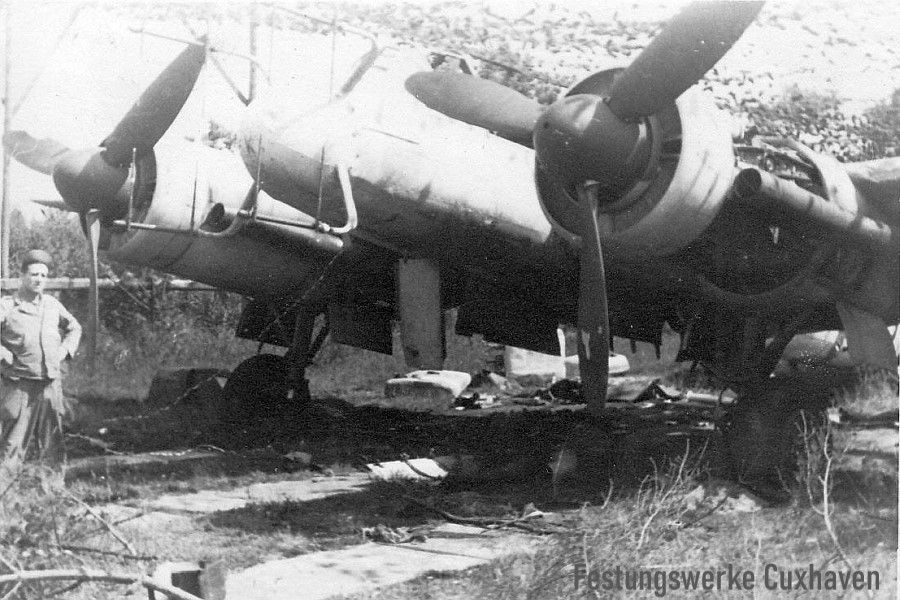
Ein Nachtjäger Junkers Ju 88 G6 mit dem 'Lichtenstein Radargerät' nach Kriegsende in Nordholz unter einem Tarnnetz. Die Maschine war vermutlich auf Grund technischer Mängel nicht mehr flugfähig und verblieb in Nordholz als das Geschwader einen Monat vorher an einen anderen Standort verlegt wurde.
Quelle: Privat
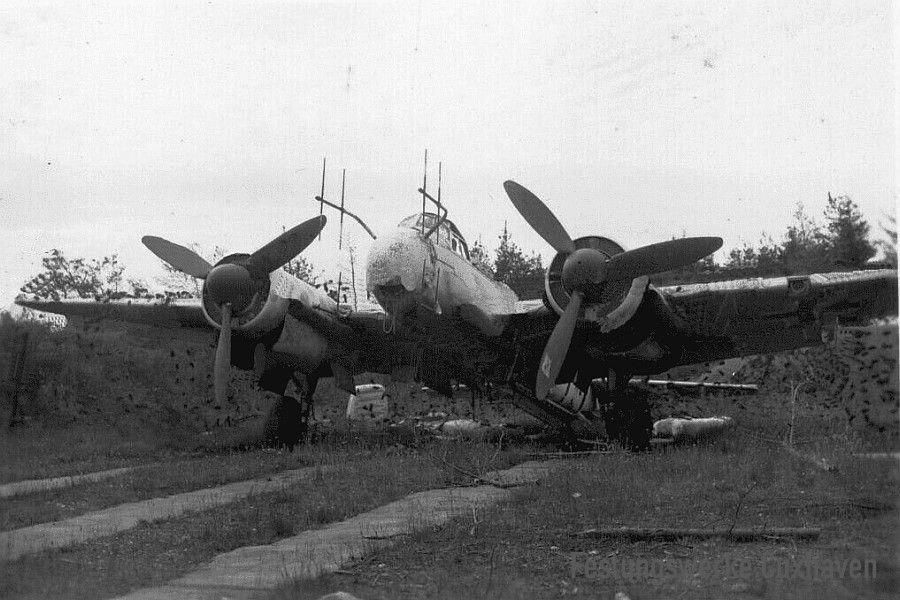
The same machine uncovered in the maintenance box.Source: Private
Eyewitness report by Arnold Döring / NJG 3 in Nordholz, mid-March 1945
In mid-March 1945, the front line of the British/Canadian Expeditionary Force was in a line between Bremen and Delmenhorst. For this reason, part of the Night Fighter Squadron 3 moved from Jever Air Base to Nordholz. The unit, which was already fully equipped with Junkers Ju 88 C-6s and "offbeat music" at the time, had already been renamed from III./Group NJG 2 to IV. Group NJG 3 at the end of November 1944. In a contemporary witness report written after the war, the former fighter pilot Arnold Döring ( 10.04.2001) describes his time with the night fighters. The attached pages refer only to Nordholz and give a good insight into the hopeless and chaotic situation at this point in the war.
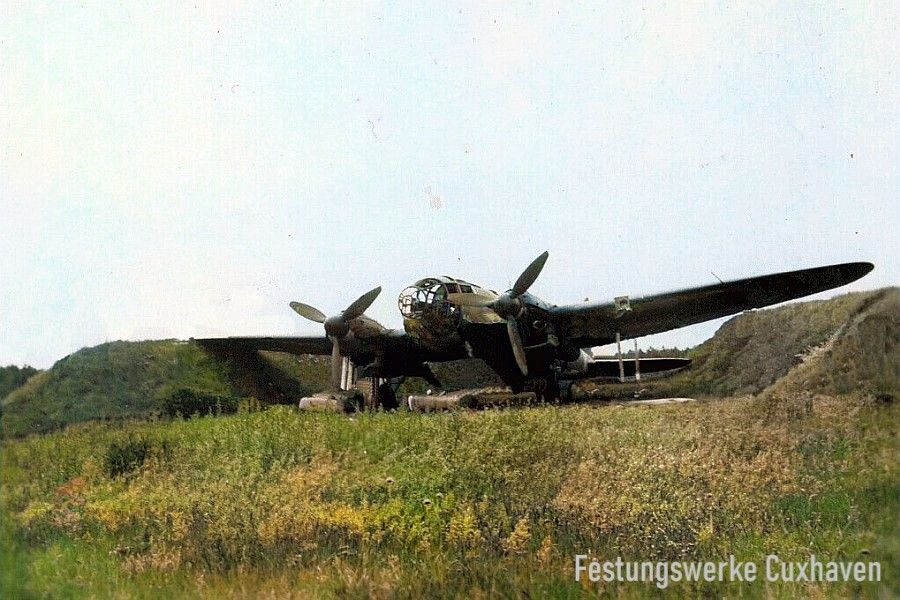
A Heinkel He 111 H6 bomber in a maintenance box, also after the surrender.Source: Private
The Jagdgeschwader 400 (Messerschmitt 163 'Komet') in Nordholz 04-05/1945
The increasingly hopeless situation of the German Reich forced the second group of the 400th Fighter Wing to move its aircraft from Salzwedel to Nordholz Air Base in April 1945. The detachment was equipped with the new Messerschmitt Me 163 'Komet' rocket fighter. However, the rapid advance of the British/Canadian troops left no time there either, so they had to move further north to Husum. Between 10 and 15 April, the squadron left Nordholz in various ways. Some of the rocket fighters were towed by truck to the port of Cuxhaven and loaded onto a ship that took them and the rest of the troops to the other side of the Elbe. 8 to 10 aircraft were towed to Husum Air Base by Me 110 fighters in gliders. The fact that these transports were not without danger was shown by the shooting down of a towing team by a British Spitfire. On the evening of 14 April 1945, Squadron Leader John Shepherd of 41/Squadron flew three Spitfires from Twente in Holland on an armed reconnaissance flight over the Bremen area. One aircraft turned around due to technical problems and returned to base. As the two remaining fighters approached Nordholz airfield, two unidentified aircraft were spotted. Shepherd subsequently described the situation in his combat report as follows: Two aircraft were spotted taking off from Nordholz. As I flew towards them, I recognised them as a Messerschmitt 163 being towed by a Messerschmitt Bf 110. Despite the rapid approach, I managed to get a short burst of fire on the Messerschmitt 110, scoring hits on the port engine and cockpit. The Me 110 then went into a nosedive to the left, flipped over onto its back and crashed, burning, into a field on the outskirts of Oxstedt. Both crew members were killed. The '163' seemed to have separated from the '110' during this and flew to the ground in a wide left turn. It finally landed undamaged in a field near the former fish meal factory near the Hohen Lith. However, it was also subsequently shot at and destroyed.
Photo right:
In 1942, the Todt Organization built two houses for the Wehrmacht on Kuhpaden Street in the Oxstedt district. They were used to house forced laborers who, from 1943 onwards, carried out fortification work to defend against invasion attacks on the coast. On April 14, 1945, the Me 110 described crashed right next to these two buildings. The wreckage of the plane was then taken to the rubble pit between Oxstedt and Berensch. It served as a pastime for Oxstedt's youth for years to come. It is not known whether the plane is still buried at the site.

Source: G.Wildfang
The Bf 110s were often used by JG 400 as tow planes for Me 163 training flights and for transit between bases. The 110 was flown that day by 26-year-old Oberfeldwebel Werner Nelte, who was killed in the air battle. He had first flown the Komet in May 1944 with the development unit Erprobungskommando 16, the forerunner of I/JG 400.In June 1944, Nelte had already had to make an emergency landing in the "Zwischenahner Meer" northwest of Bremen when the tug developed engine problems. It is assumed that Nelte was supposed to tow the Me 163 from Nordholz to Husum, where 2./JG 400 was established when Shepherd attacked with his Spitfire.The 'Komet' was an incredible, if unorthodox, fighter. Difficult to handle even for experienced pilots like Nelte or Woidich, most of the aircraft and pilots were lost in accidents rather than in combat. The shooting down of the tow vehicle may also have been a reason why Lieutenant Reinhard Opitz preferred to fly his 'Komet' the 100 kilometers directly to its future location under its own power. It was the first pure cross-country flight of a rocket fighter of this type. According to his account, he managed to navigate very well through the contours of the coastline to Husum.



